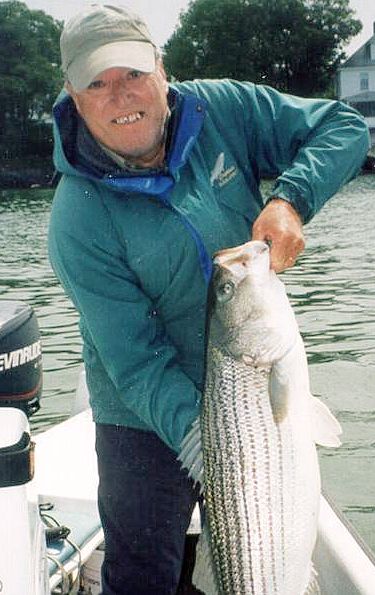Likely
you have read the news about possible striped bass conservation measures
adopted by the Atlantic States Marine Fisheries Council last fall in Mystic
Connecticut at their annual meeting. The short news is a 25 percent decrease in
recreational and 20.5 percent decrease in commercial take. All sounds good, right? Well I am sorry to
report that’s not necessarily the case. Striped bass are still in trouble and
the ASMFC actions aren't going to help that much. The reason for me saying that
is a lengthy subject, too long for this forum. So, I suggest you go to: http://oneanglersvoyage.blogspot.com/2014/11/striped-bass-bait-and-switch.html for a lengthy, spot on analysis of the
subject. If you are honestly concerned for the future of striped bass fishing
in Maine
The accompanying photo is
typical of what happens south of Maine
Last fall, nine concerned Maine guiding
captains rented a 12 passenger van, went to the ASMFC meeting in Mystic, Connecticut
to display their support for strong conservation measures that had been hammered
out over the past three years. A complicated measure came up for a vote and
passed. We were quite happy with the outcome as it seemed like a small victory
after many years of battling for striped bass mortality reduction coast wide. If
you read the above suggested blog it is clear that we all bought into the snake
oil sales pitch. You are not likely to see any further regulation changes for
three to five years as the ASMFC process for change takes that long if they
want it to. And you can believe they don’t want it to. The one fish at 28 inches standard stands in place for the entire
east coast recreational fishery. The so called conservation equivalency
formulas in place are likely to allow states to petition for things like two
fish, 23 inches or larger per day to accomplish the equivalency.
Sounds crazy doesn’t it? But when New Jersey New York Rhode Island Maine
Maine’s popular slot limit may
be allowed but with a tighter length limit such as 22 to 24 inches or 24 to 26 inches with a one fish limit. Maine
I for one hope the 40 inch trophy fish is
dropped. I never liked it and here’s why. I’m not opposed to the 40 inch fish
being taken. It’s the process of getting it that bothers me. A few large fish
are taken with artificial lures and flies, but most are taken using bait,
especially live lining mackerel. Now that’s all fine and good if you only catch
that one fish over 40 inches and call it a day. In reality, the quest for the
larger fish means catching several between 30 and 40 inches while using live
bait. That means playing, landing and releasing them safely. That’s my issue.
To many breeding size fish will die in the process of finding that one 40 inch
plus fish. We need more, not fewer breeders in the system to help the recovery.







